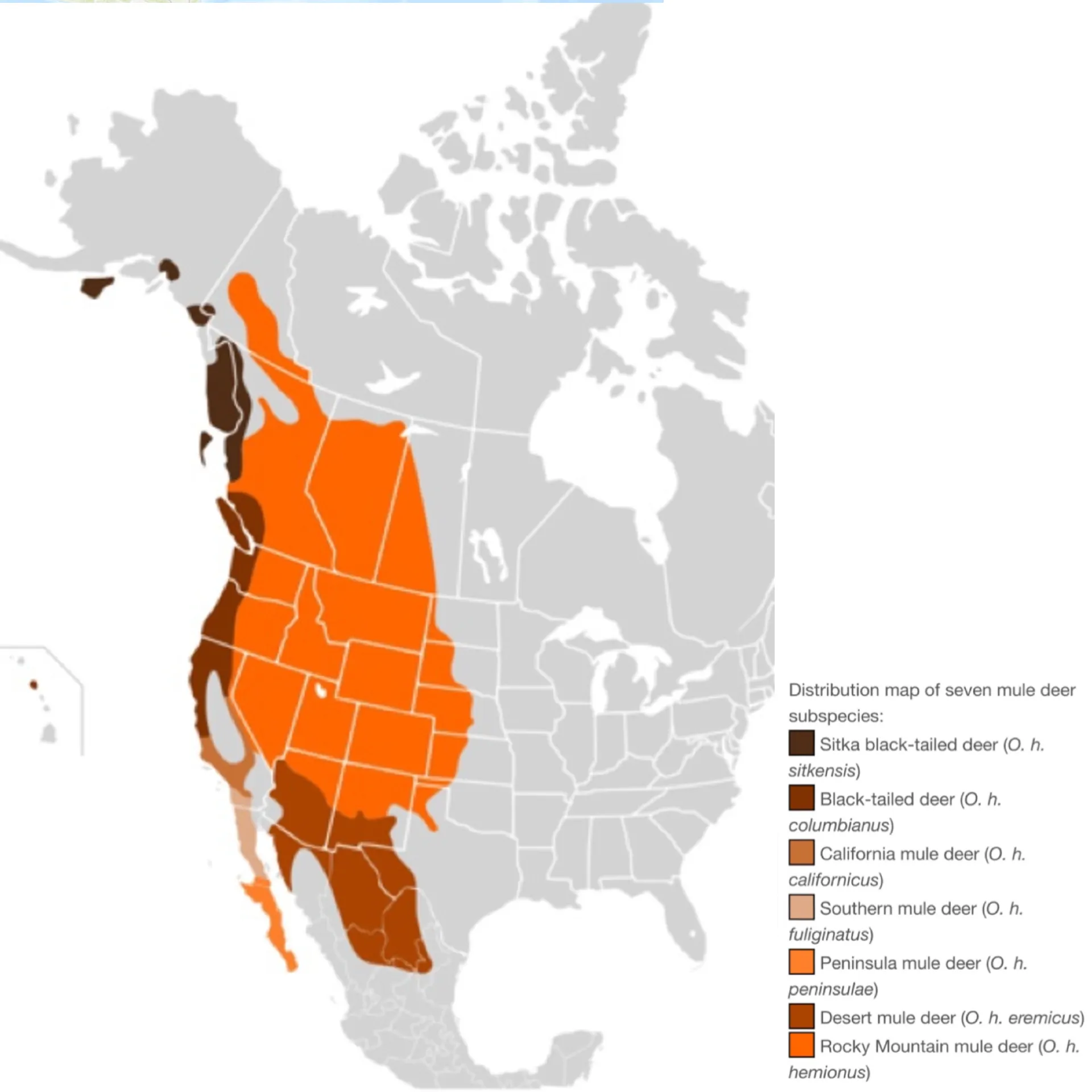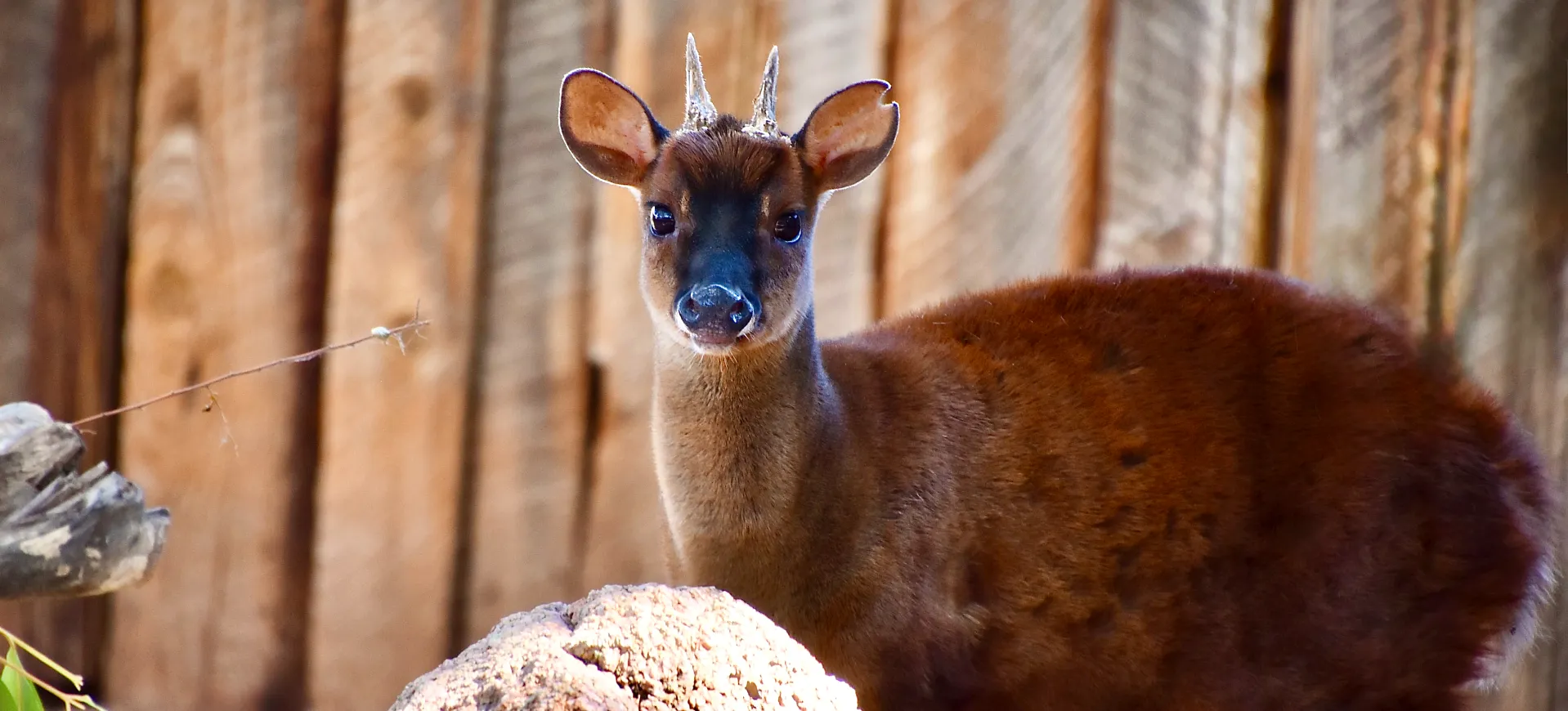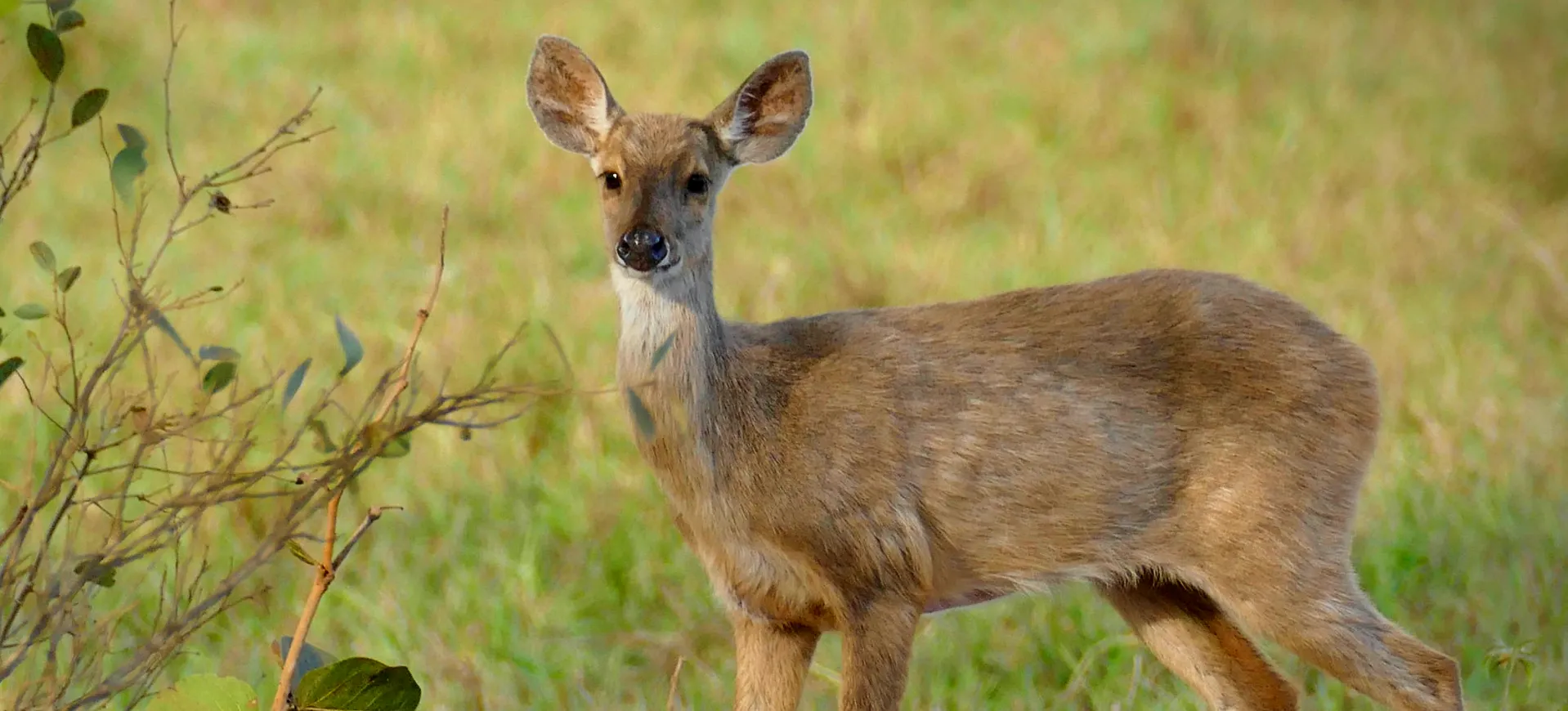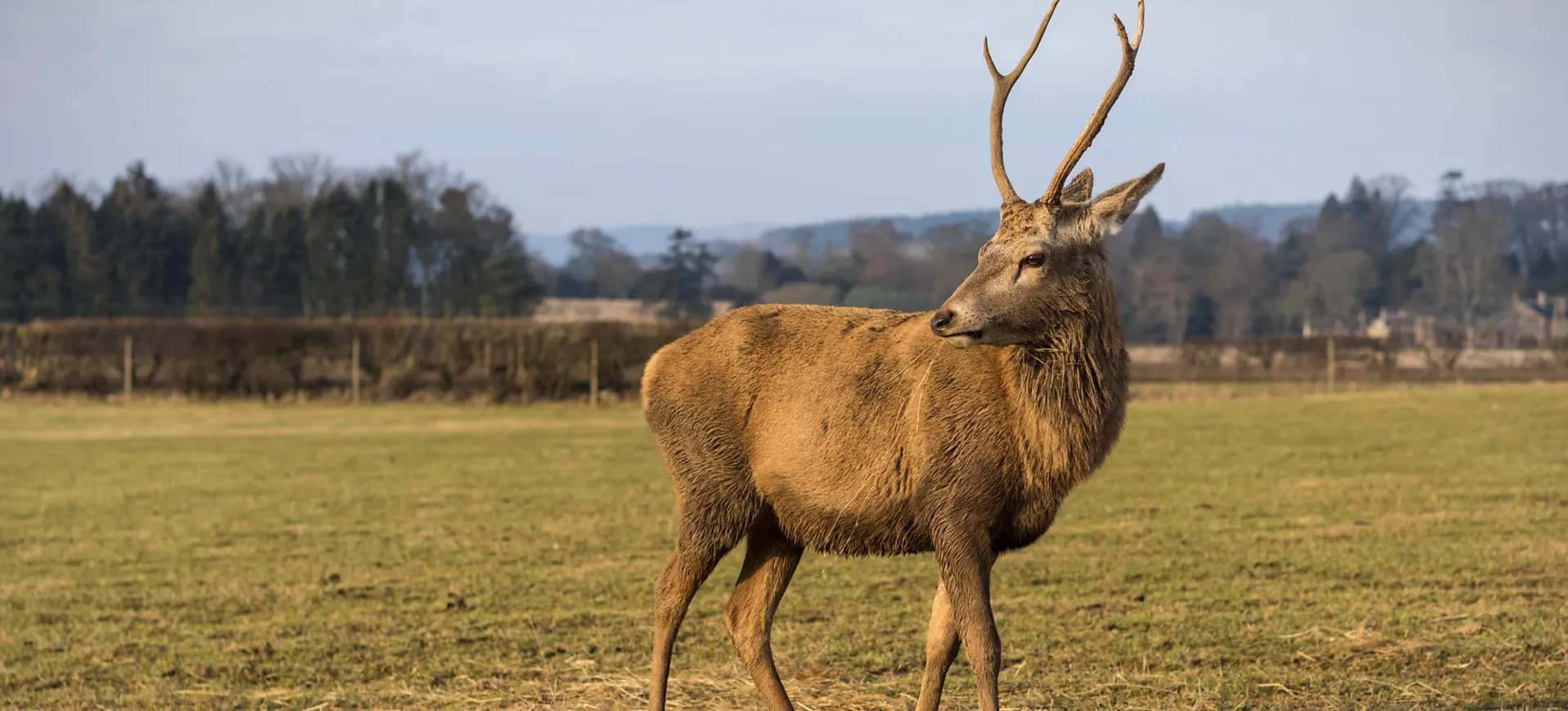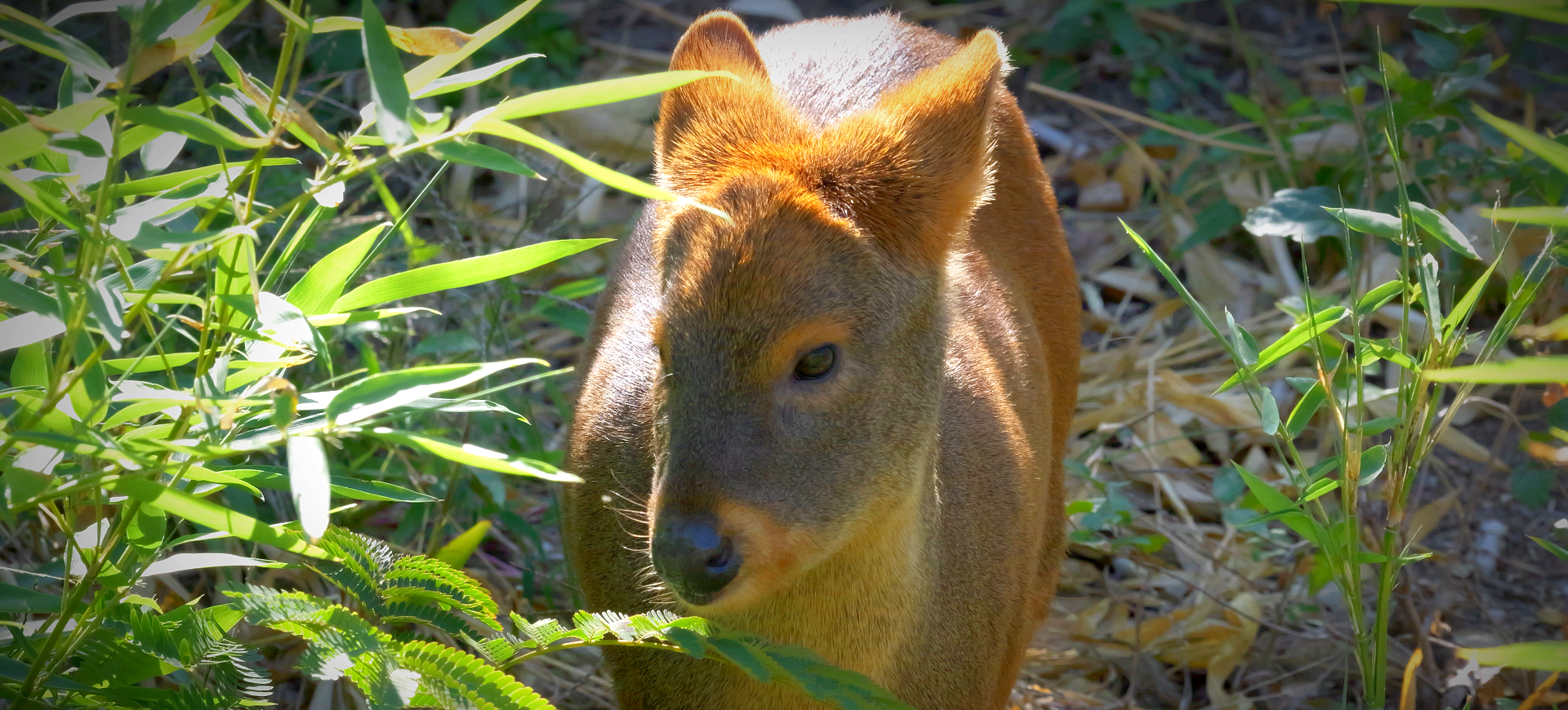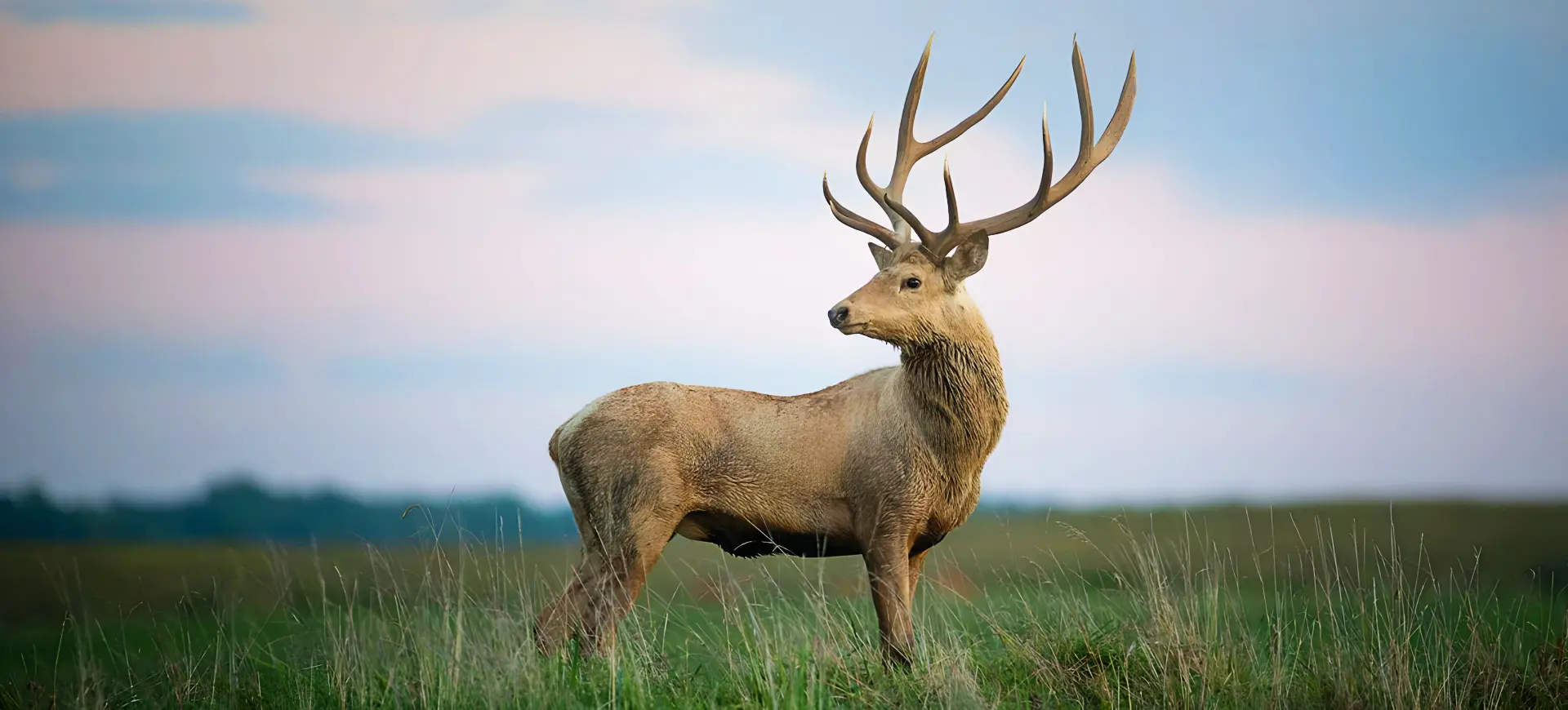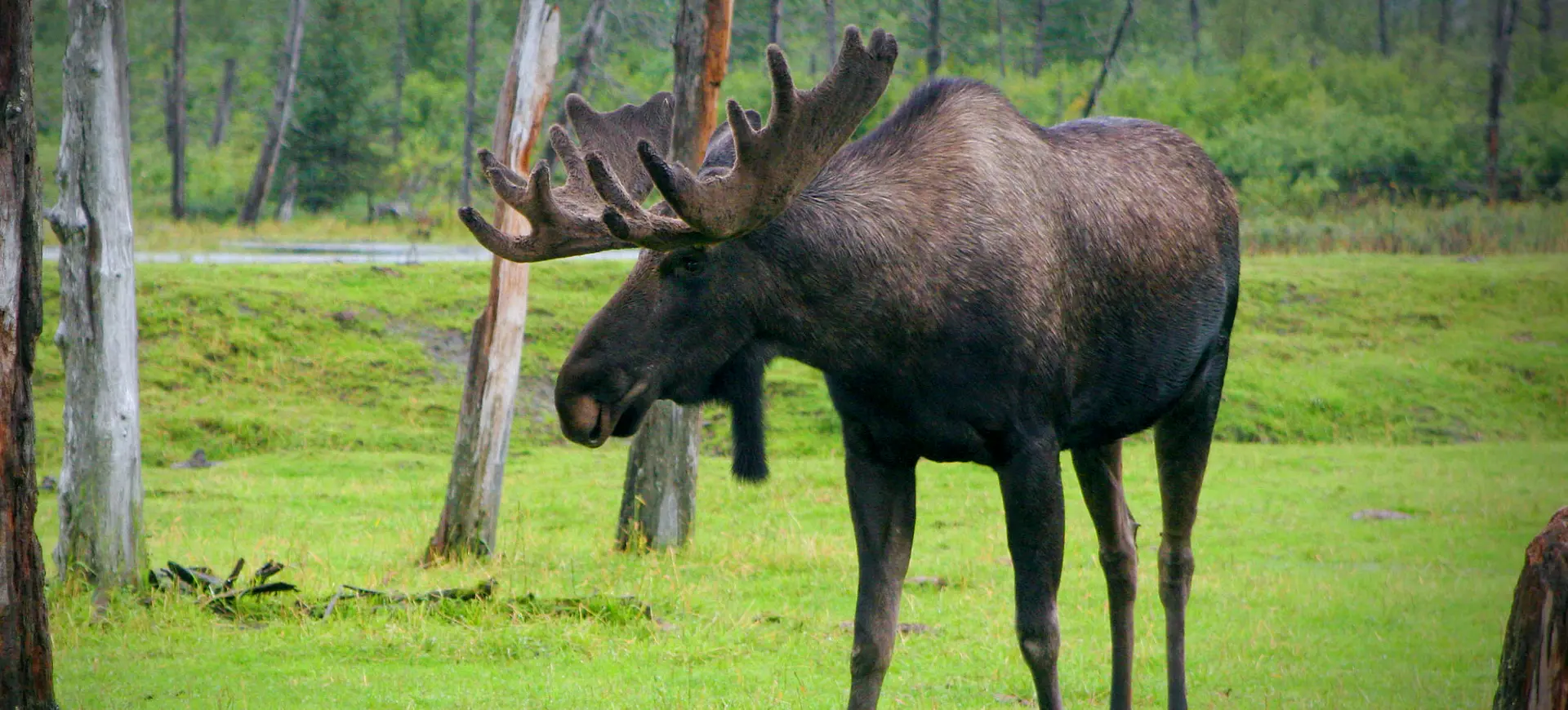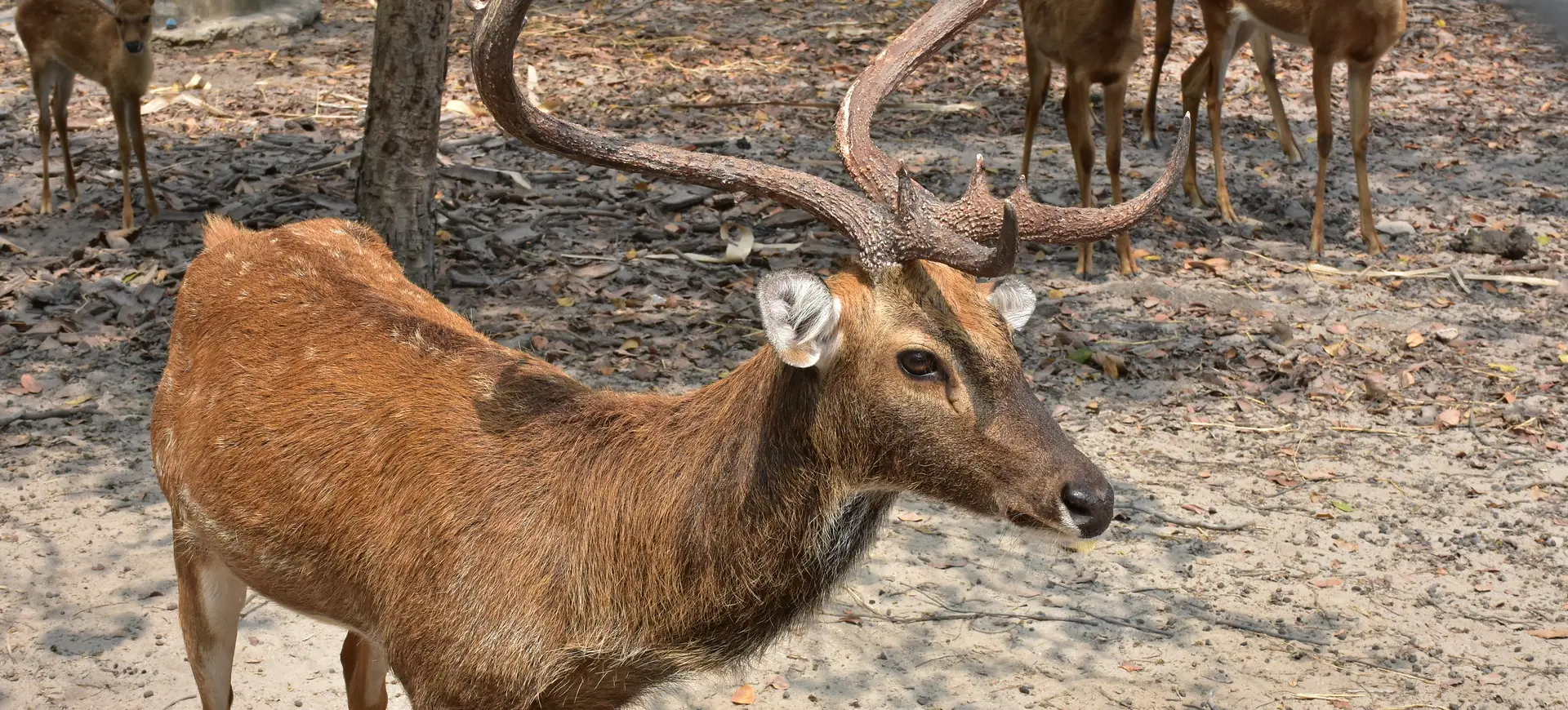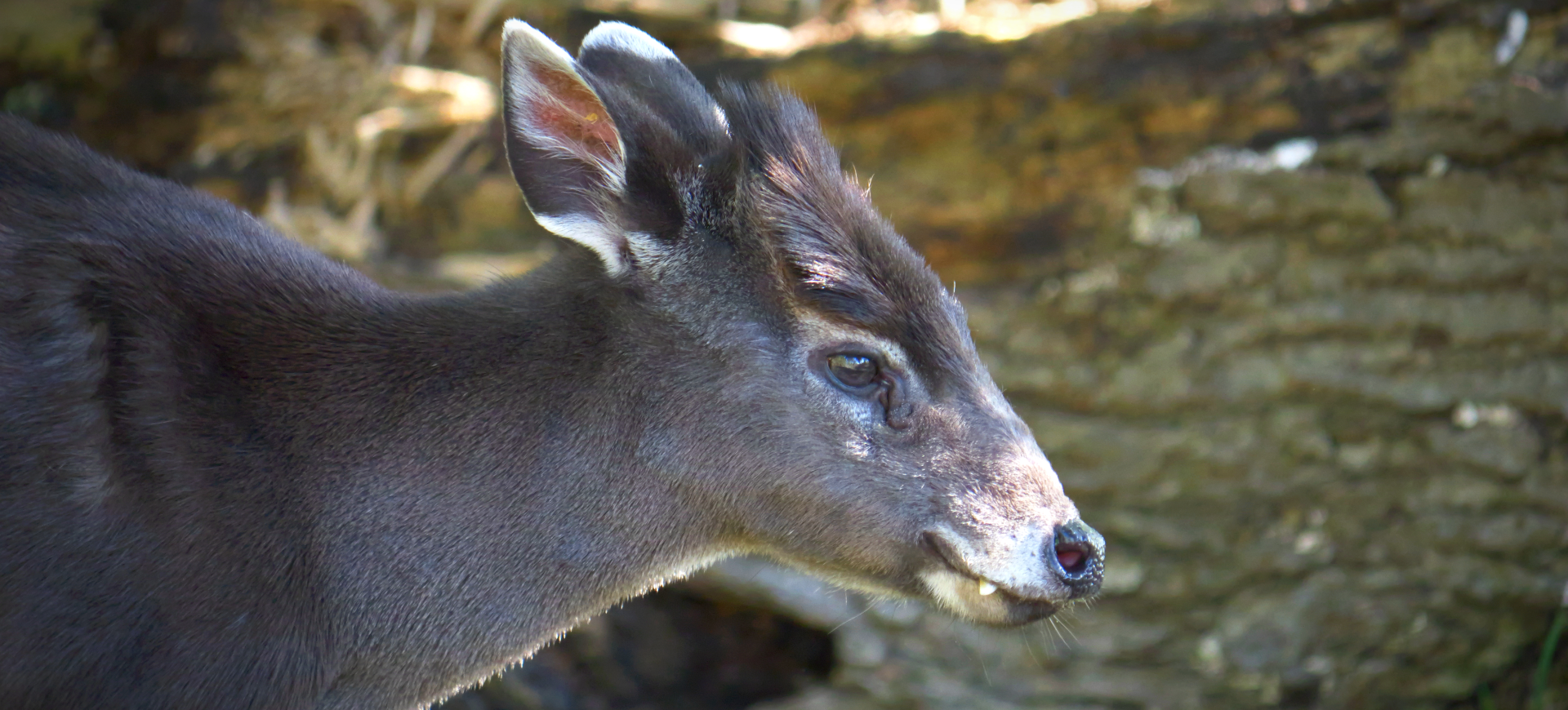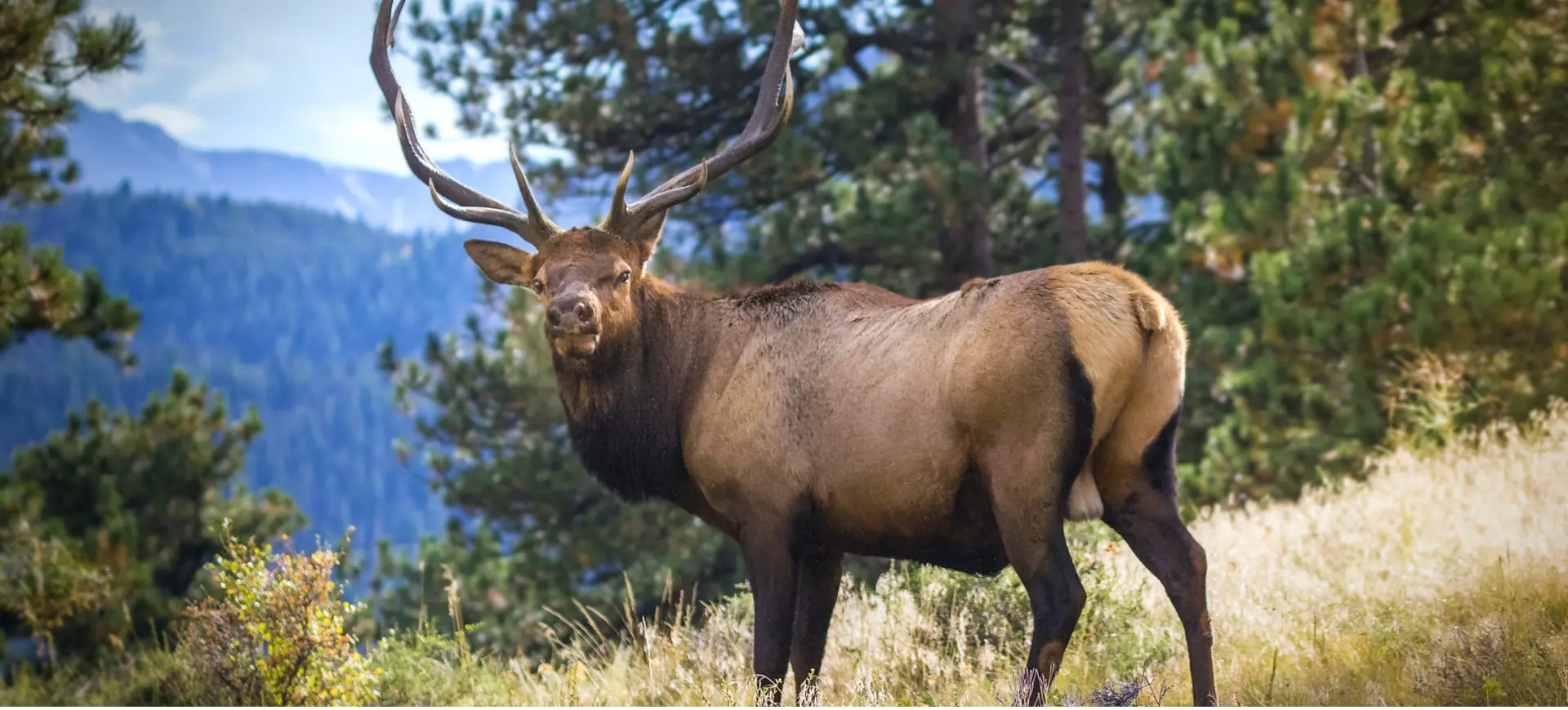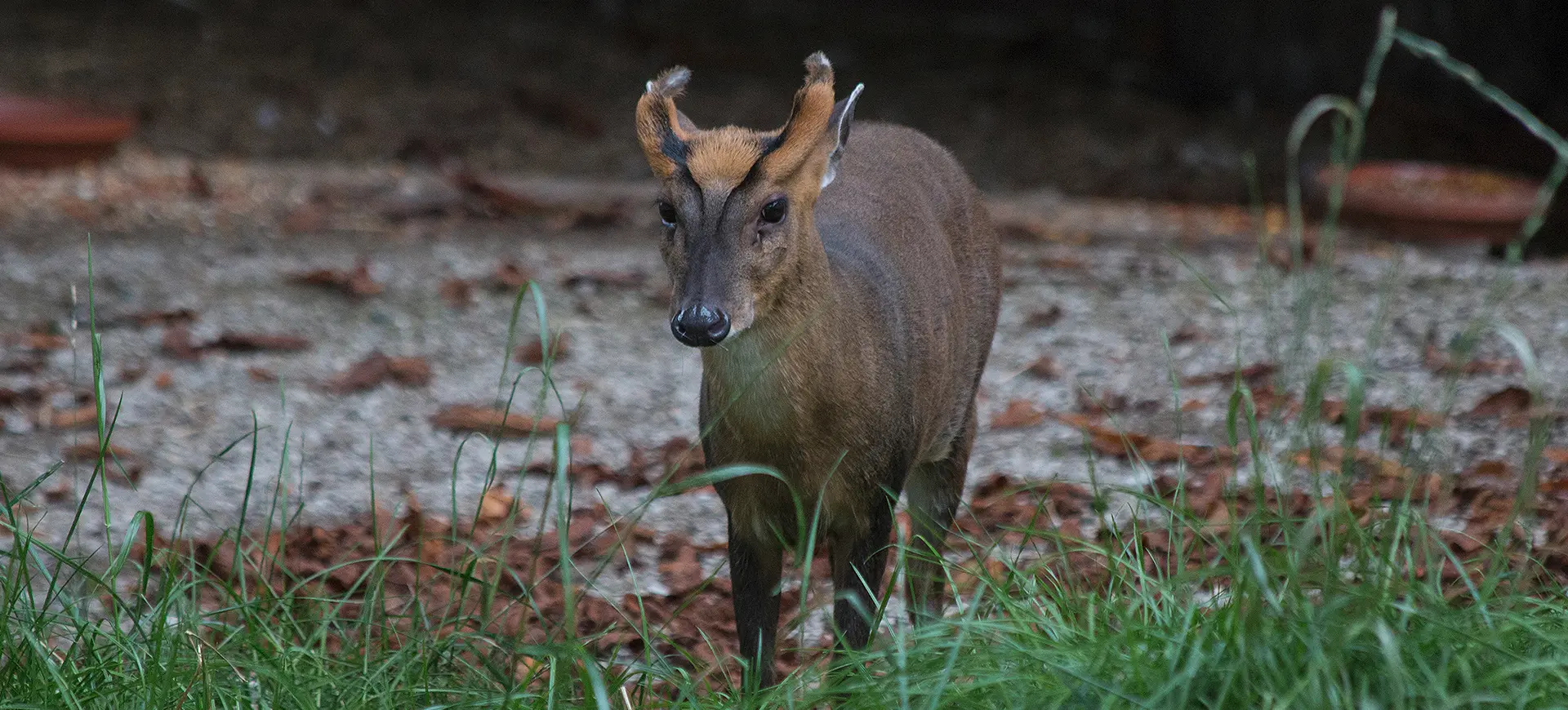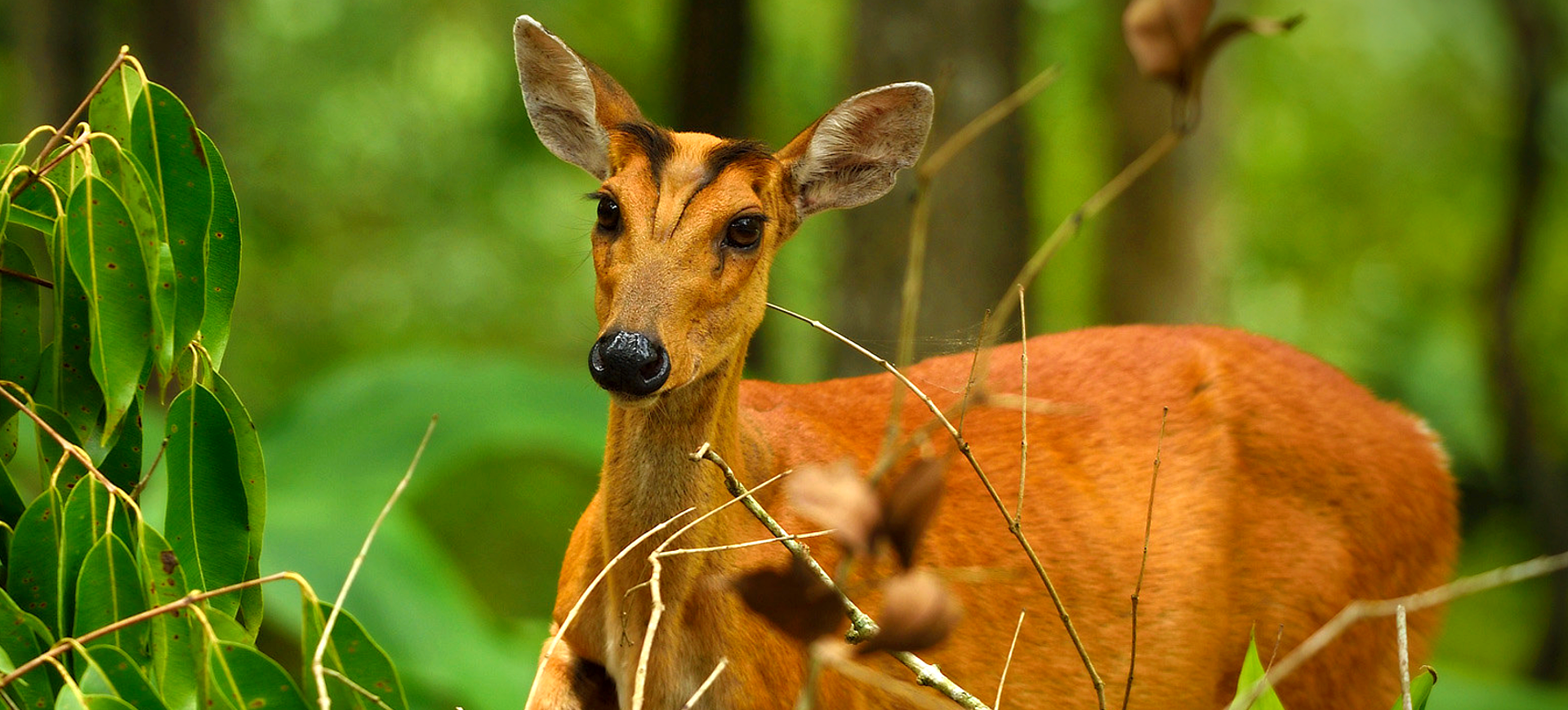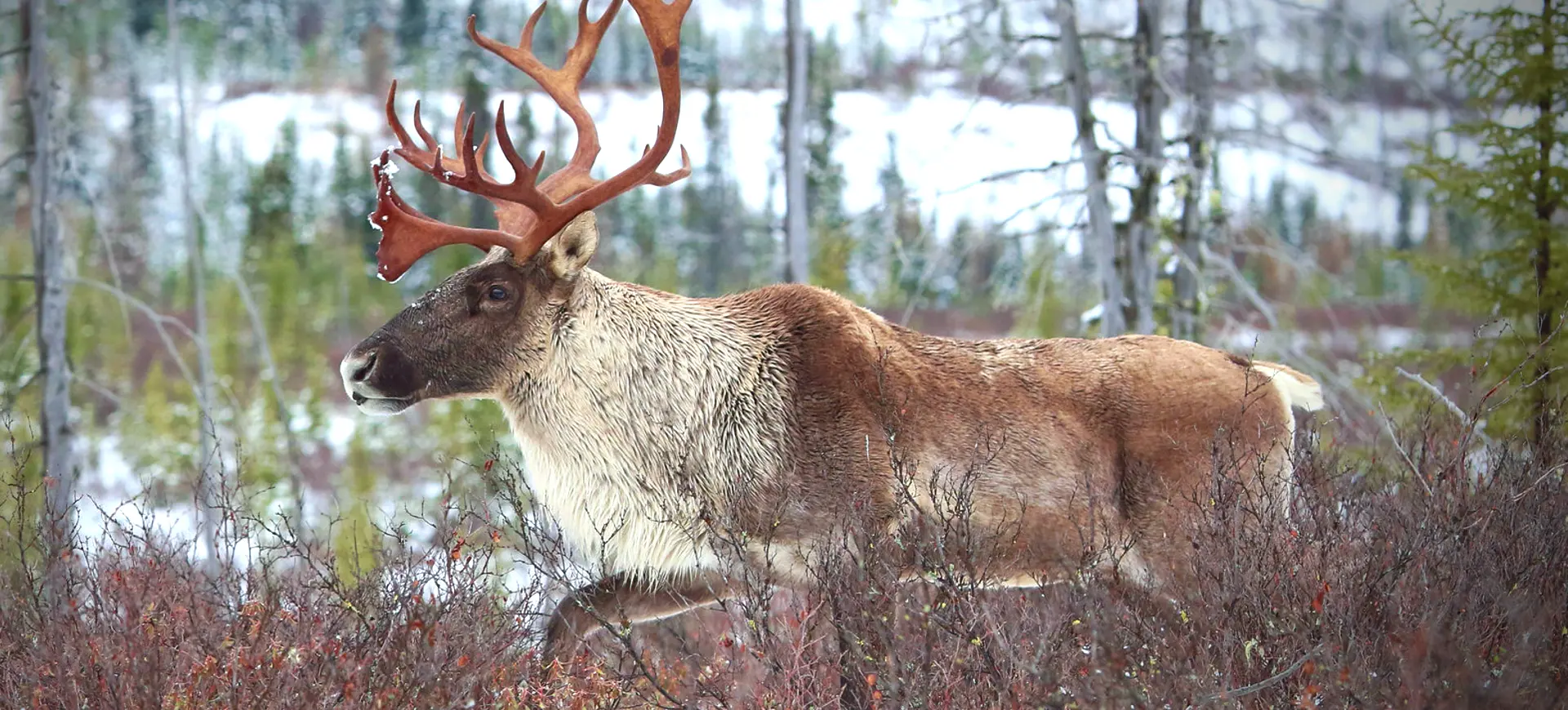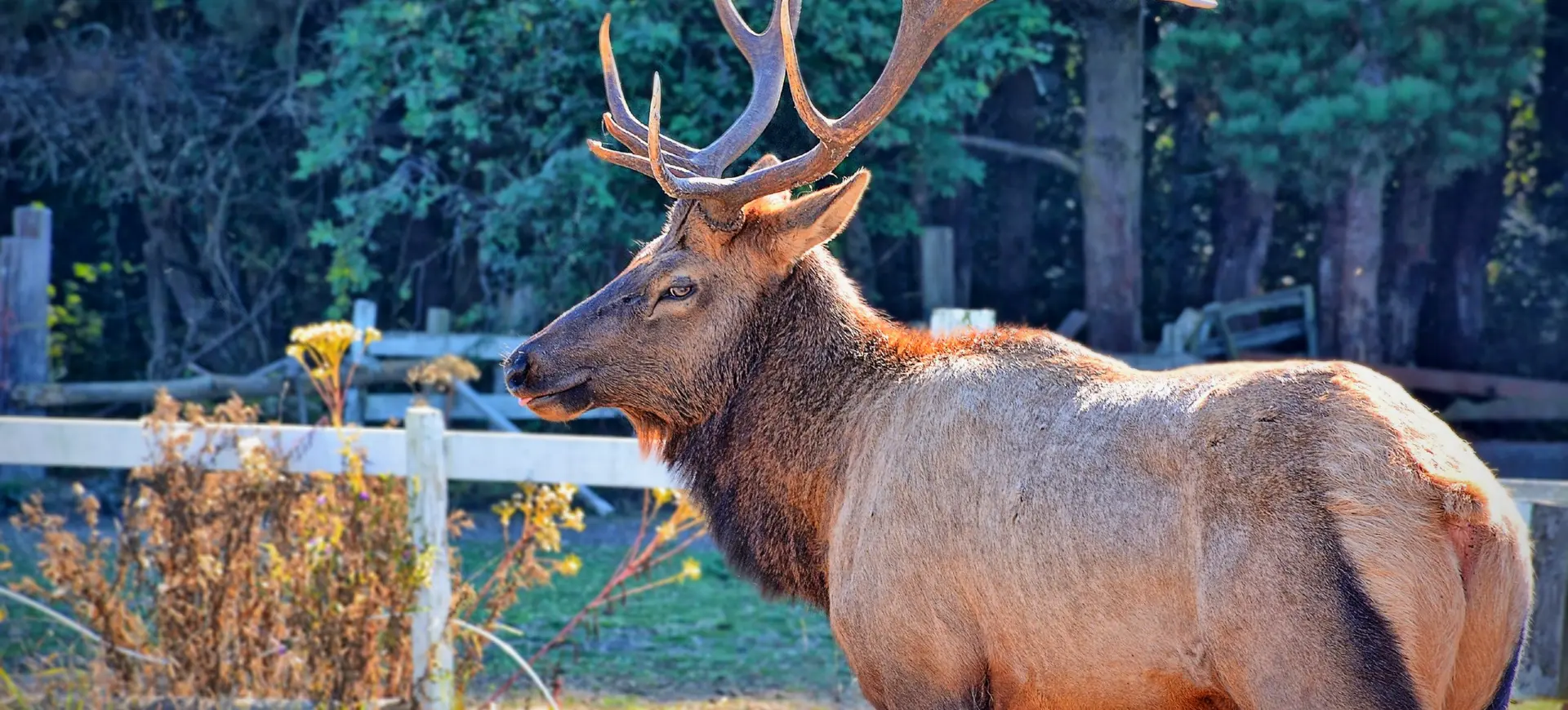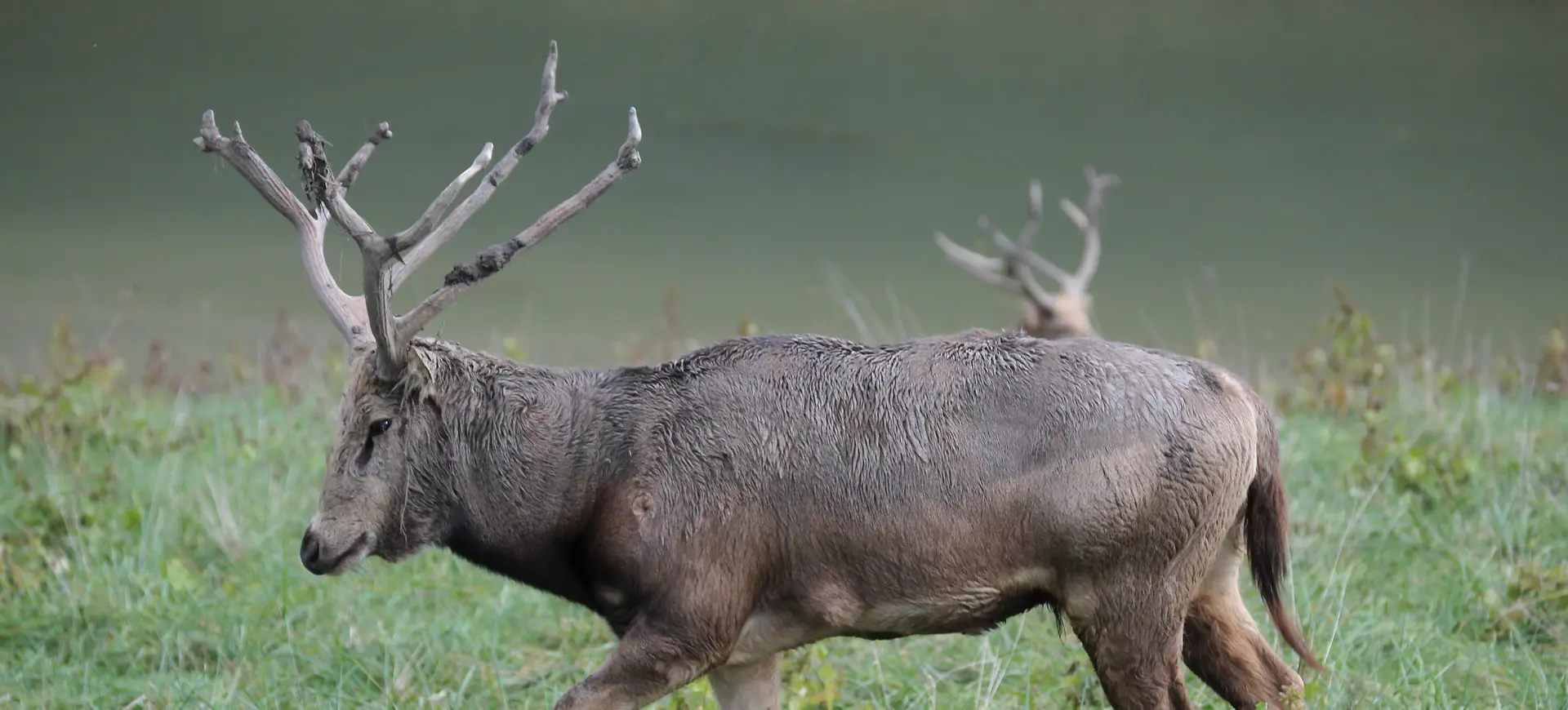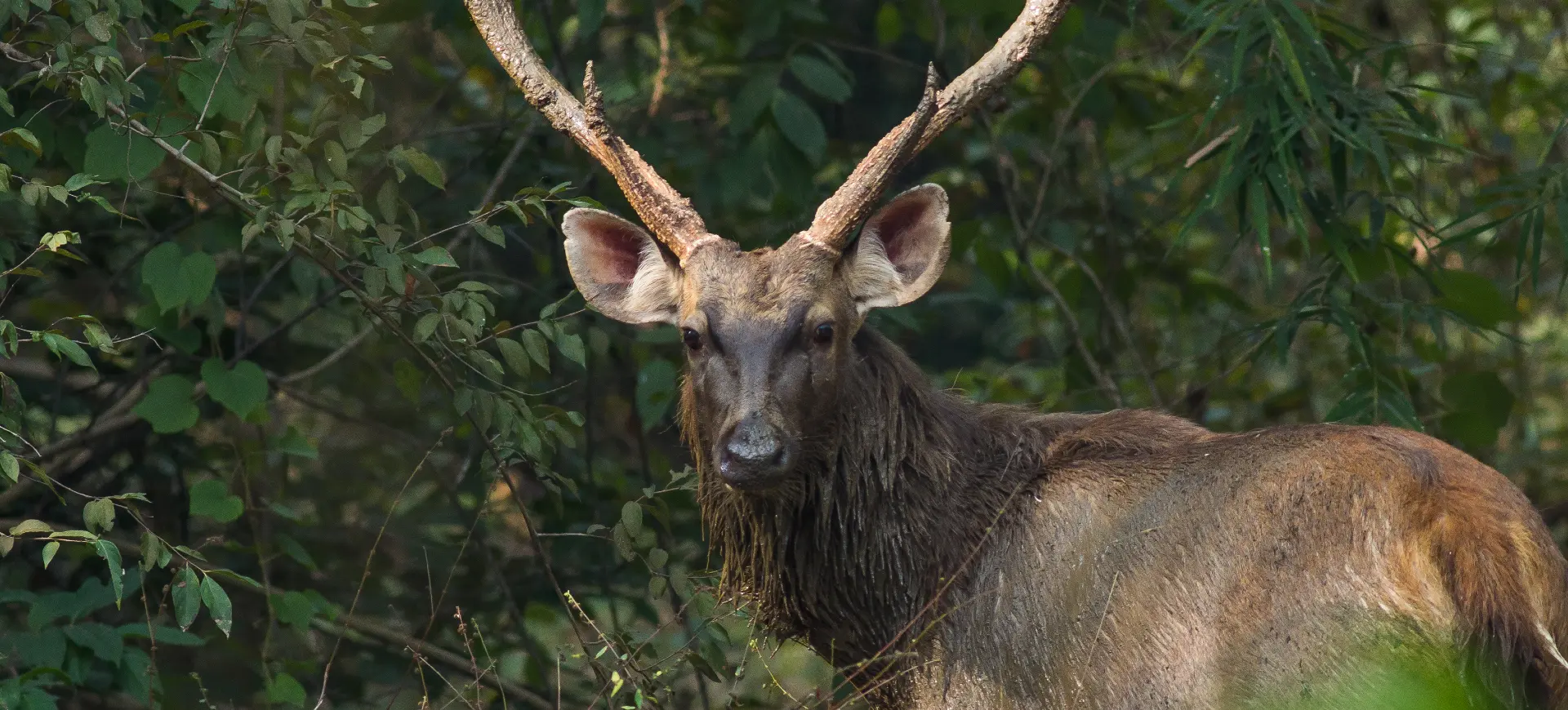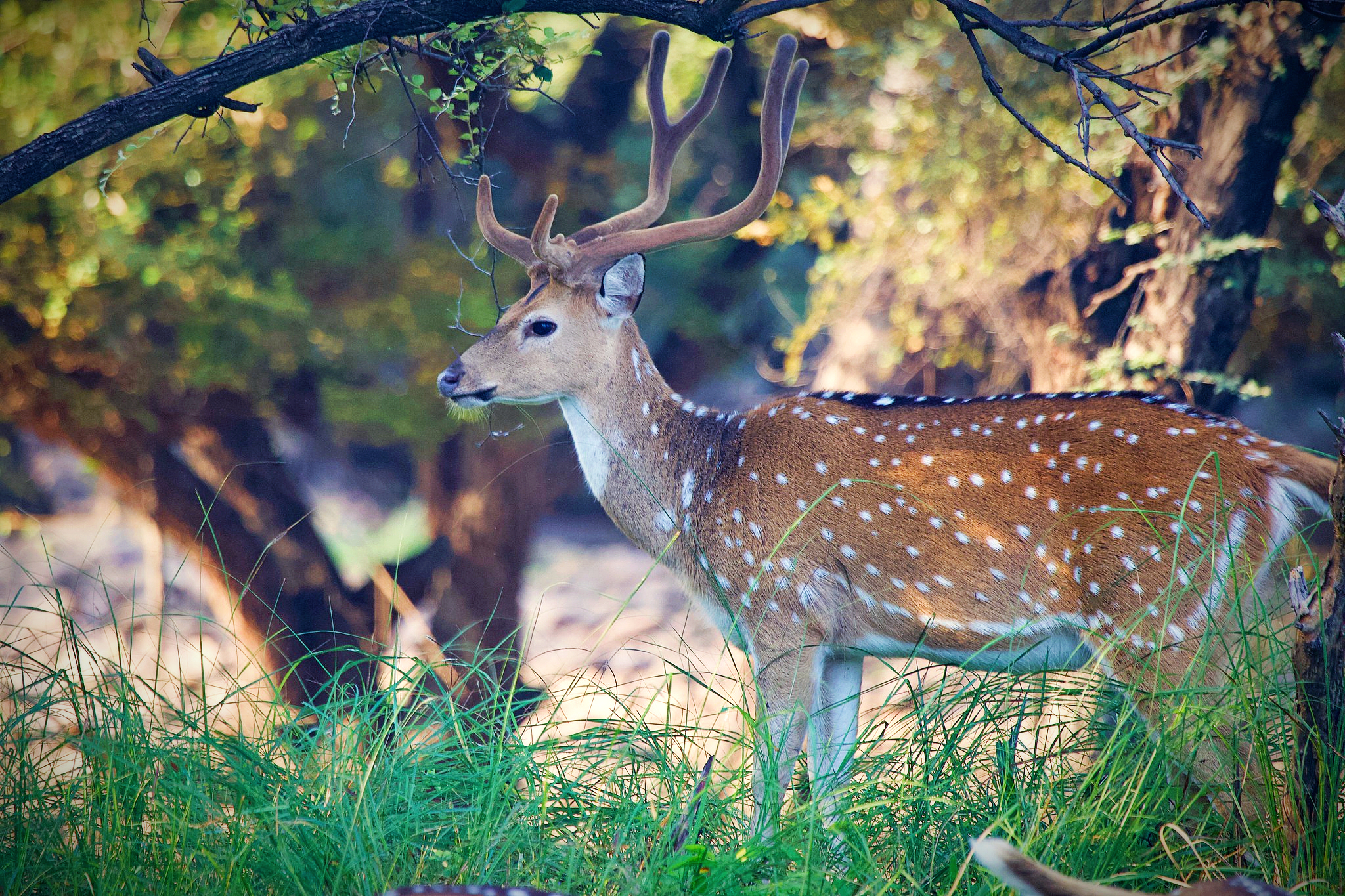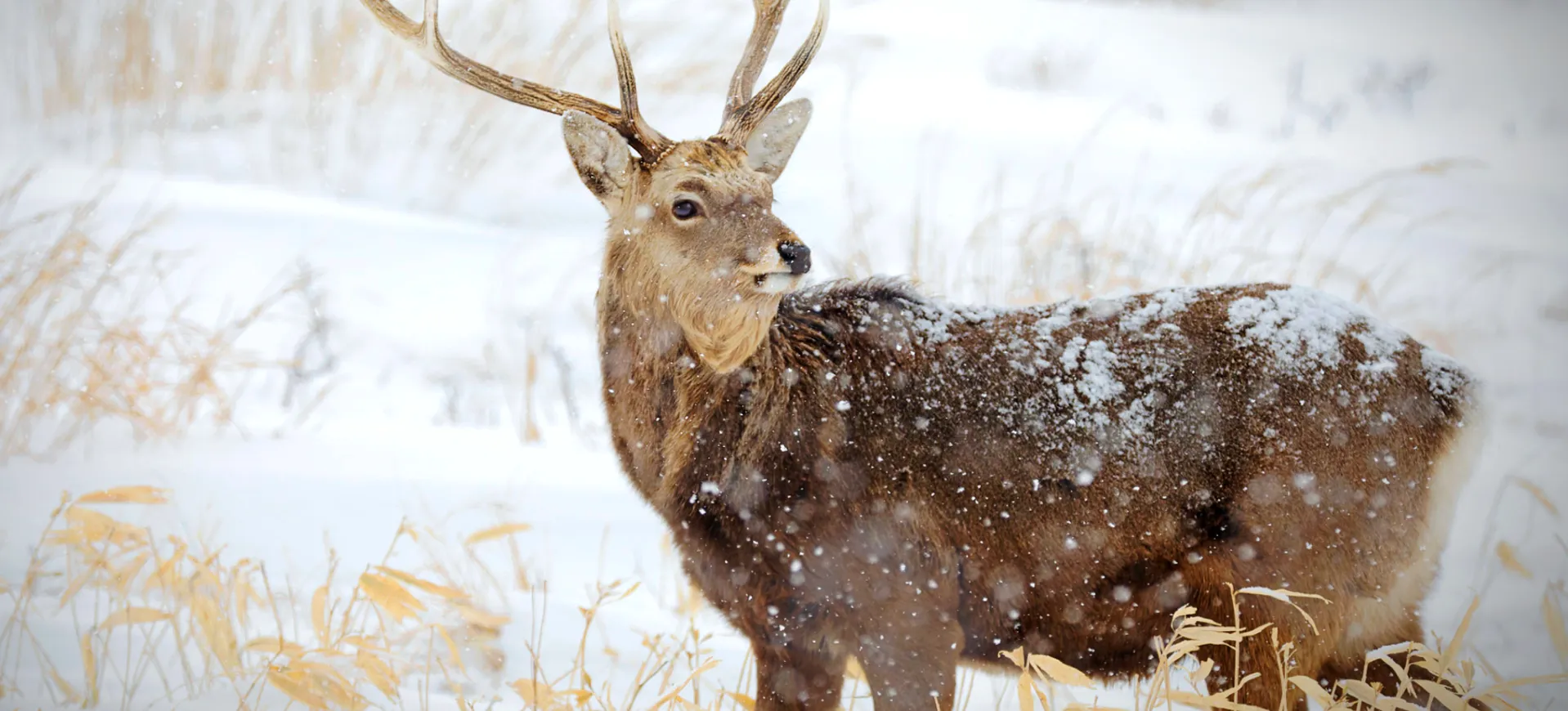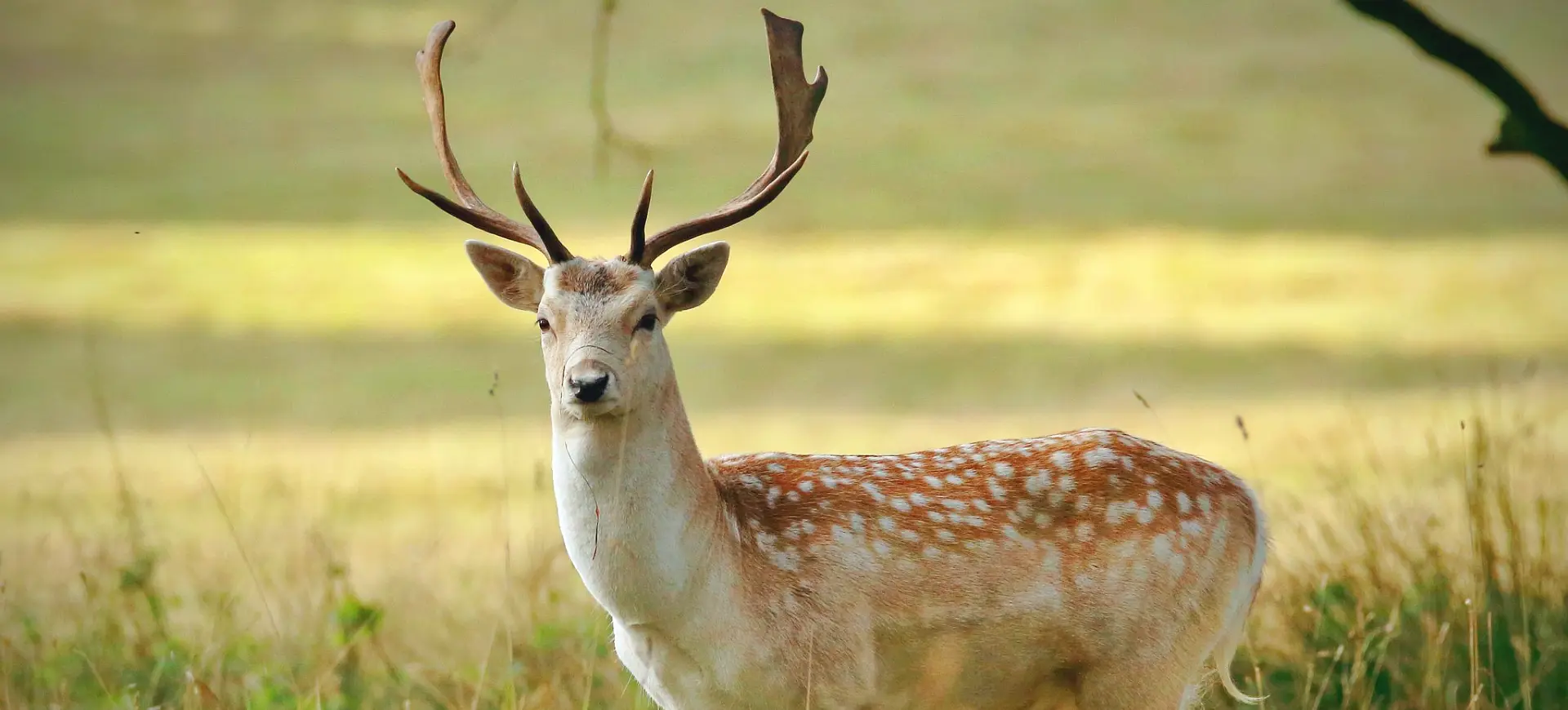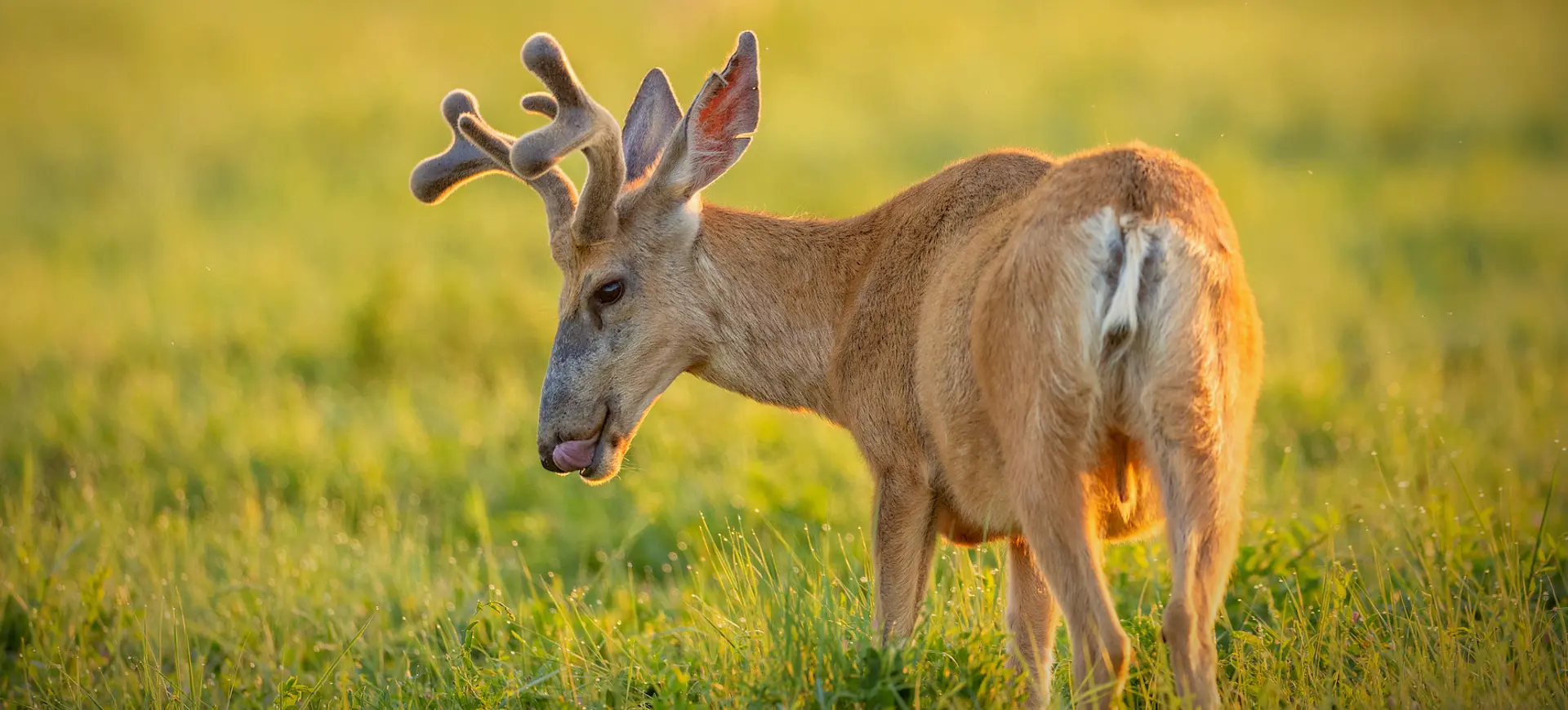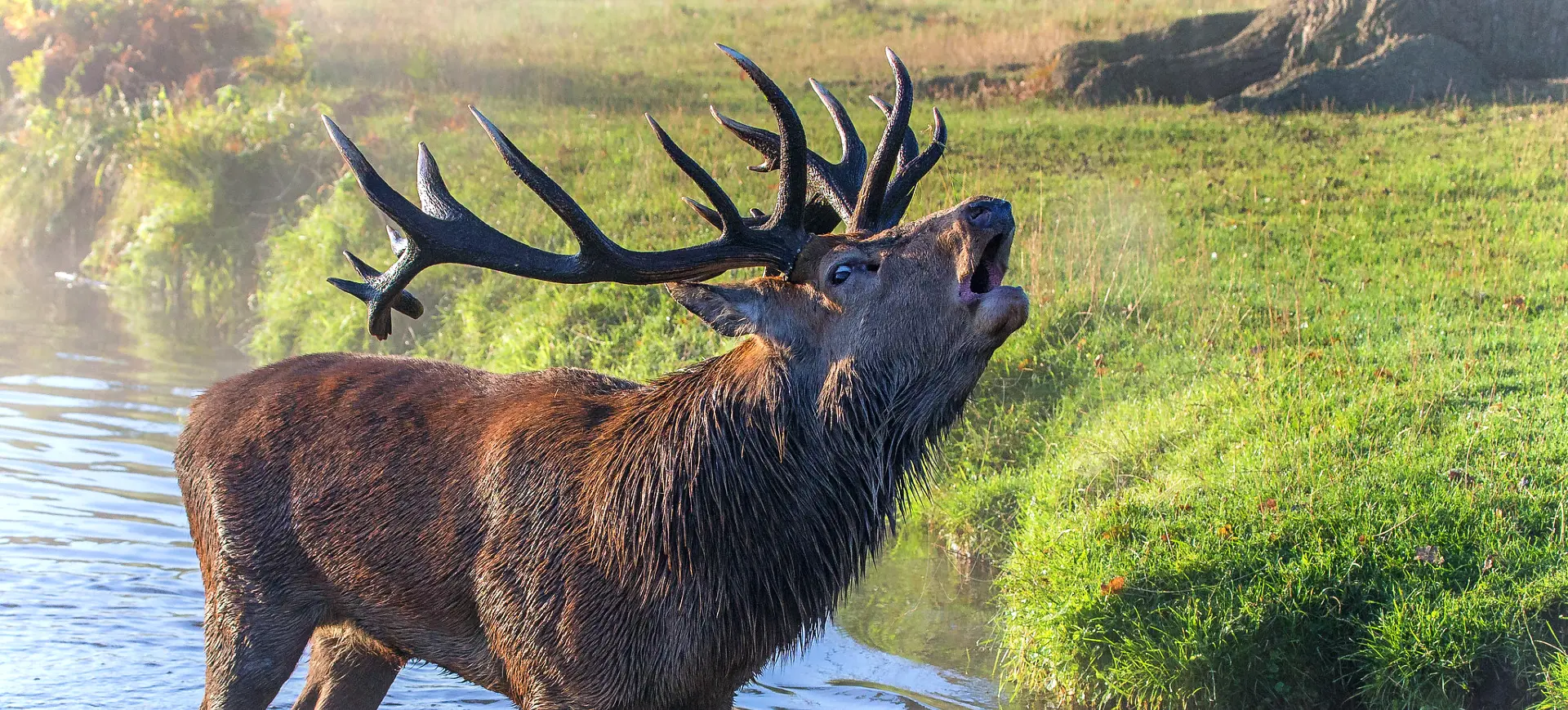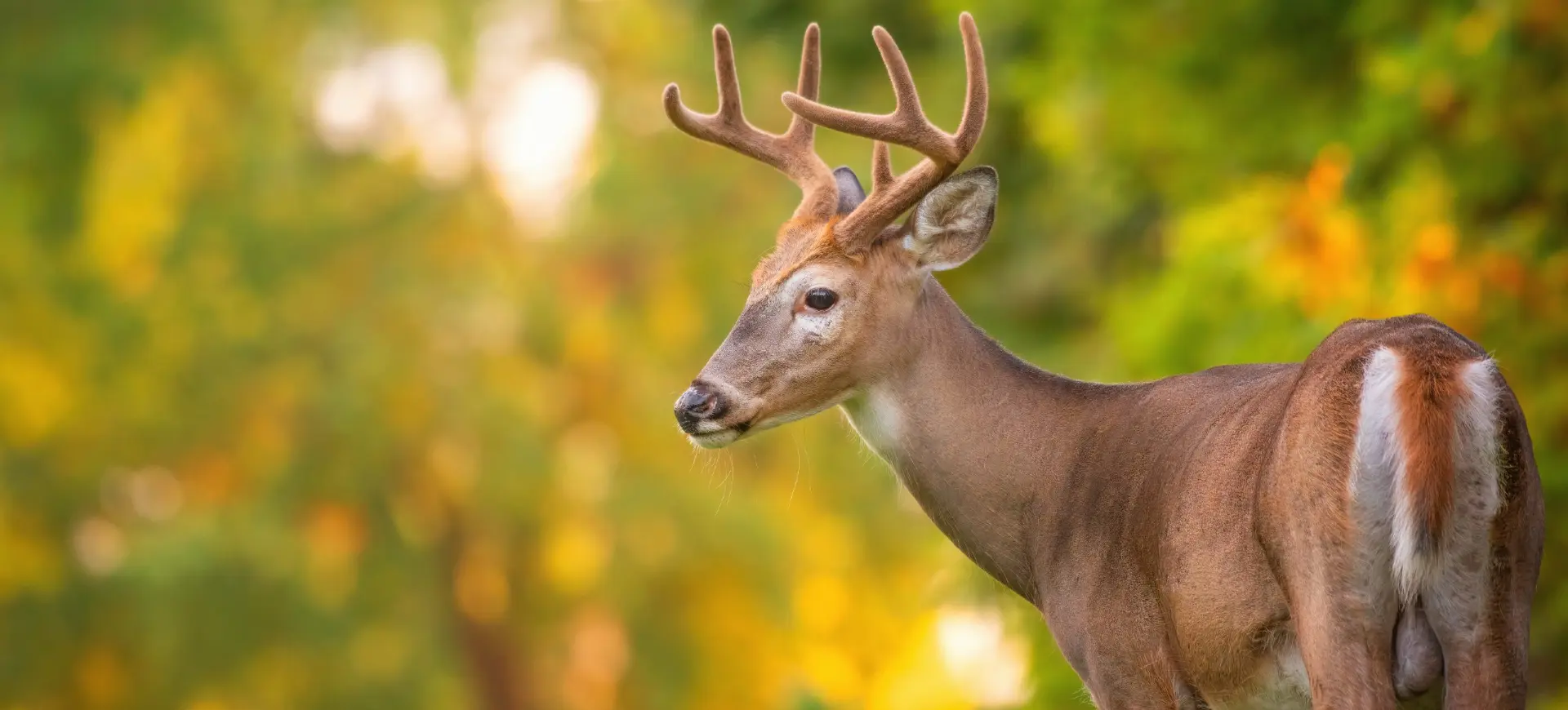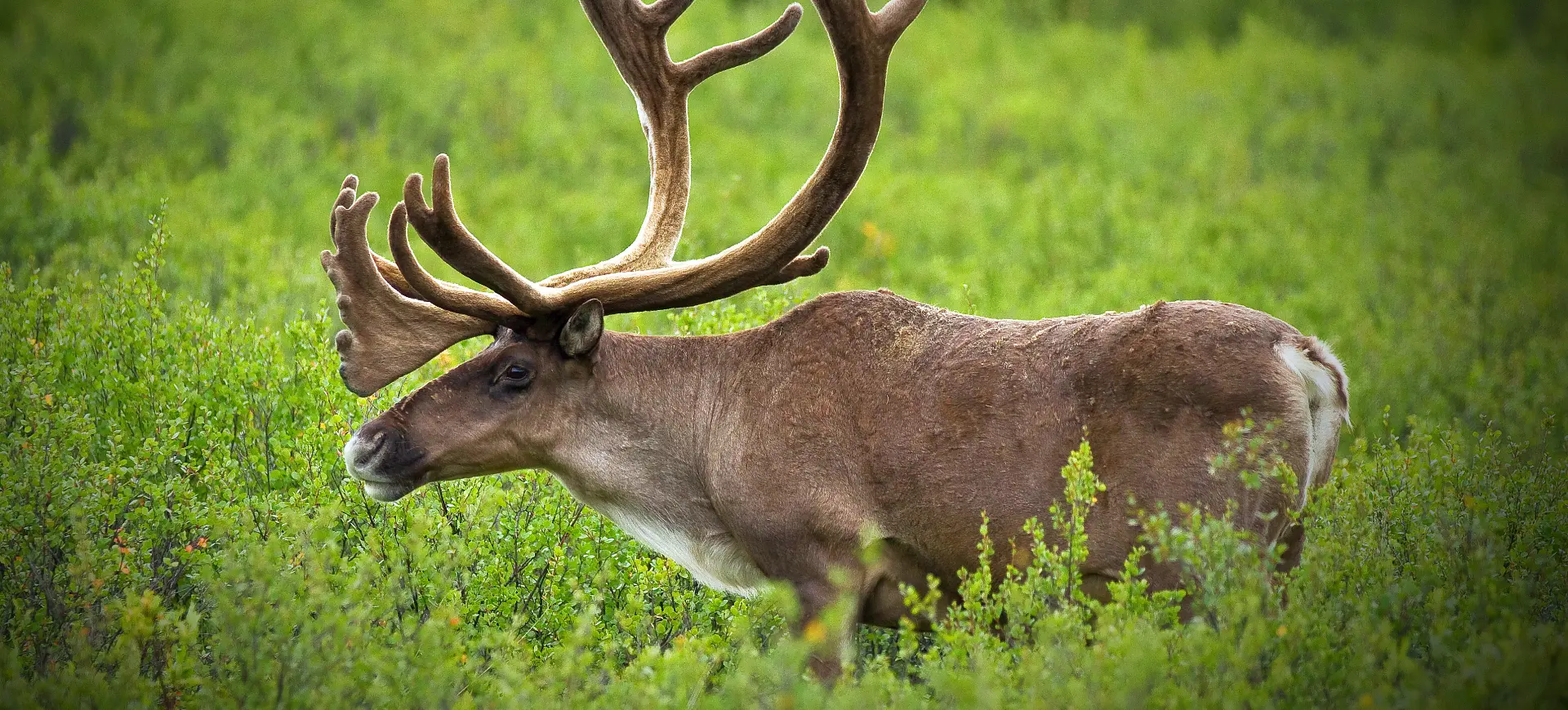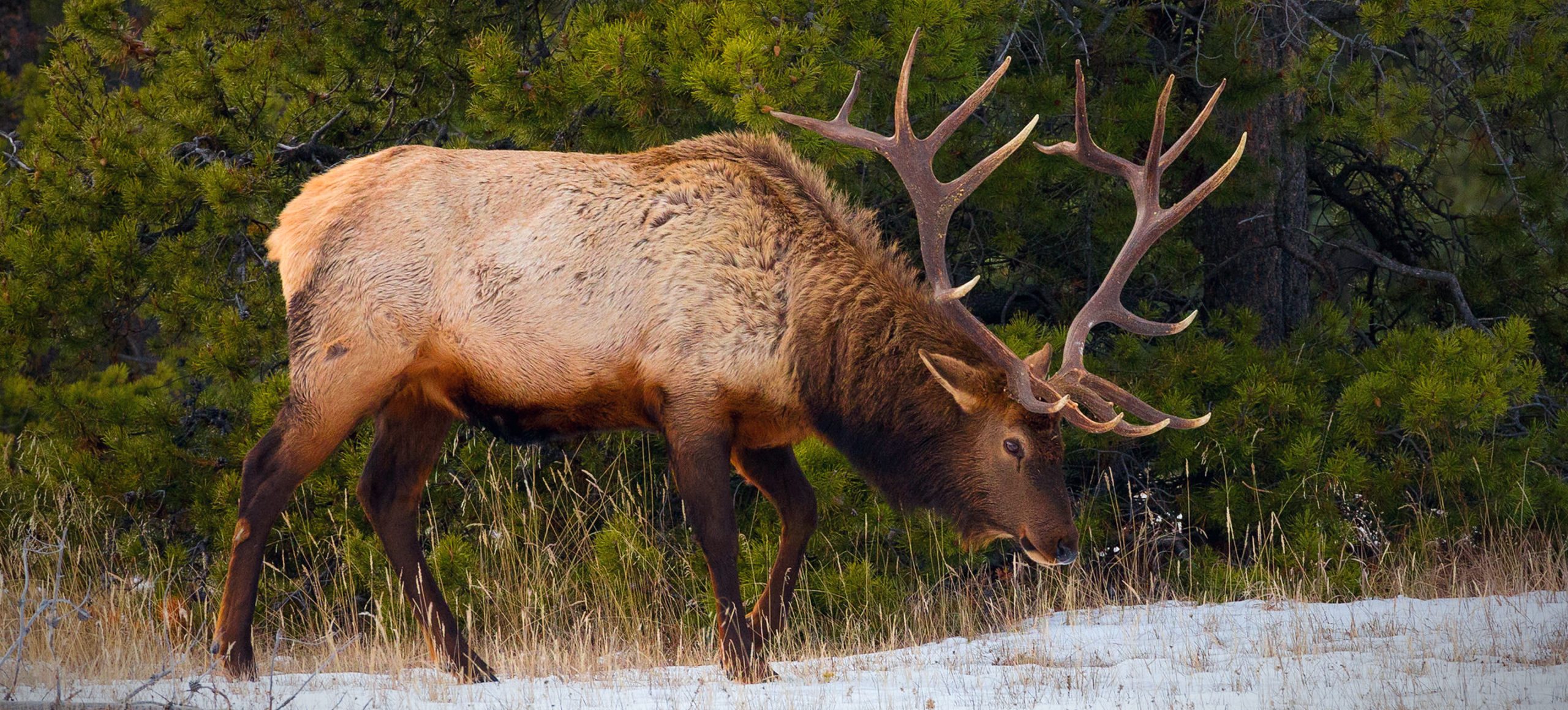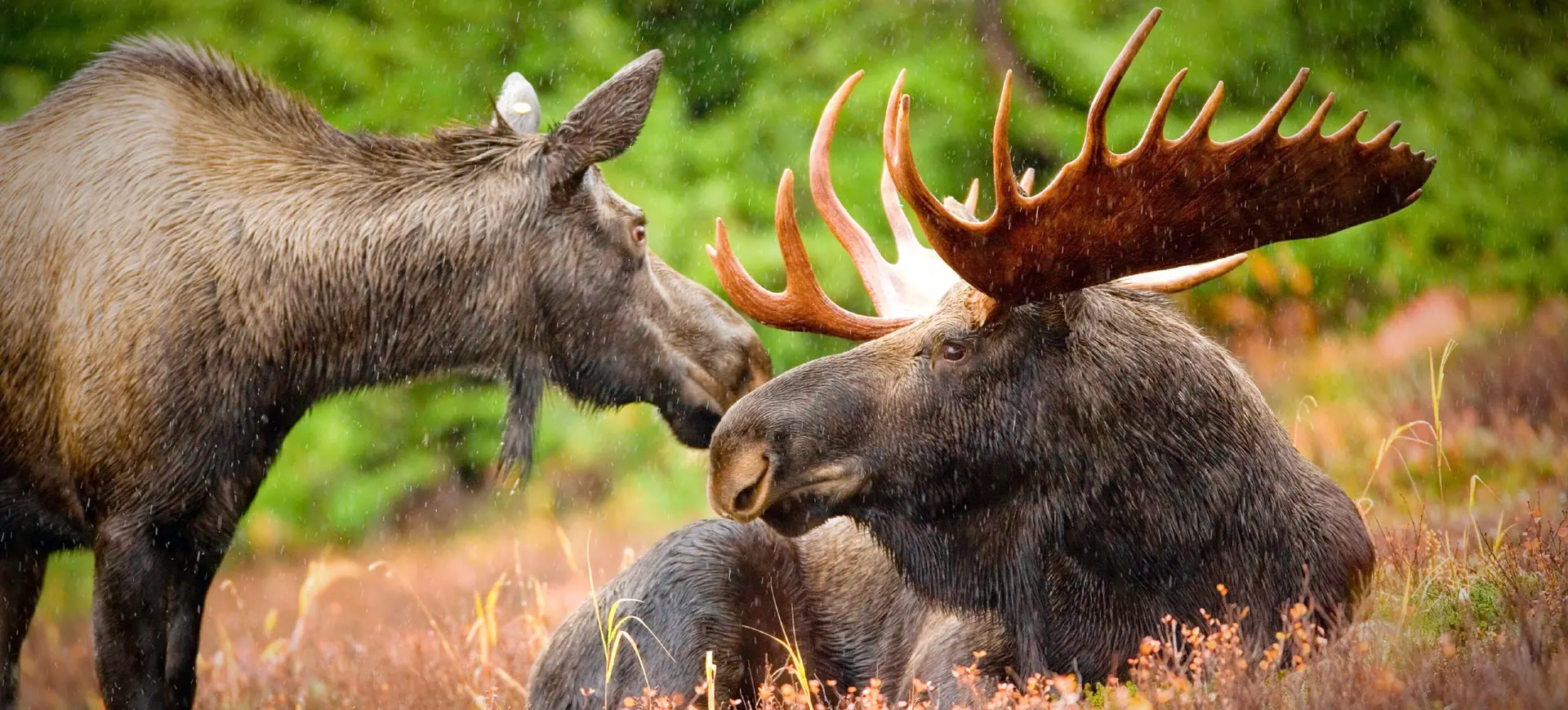Overview
The black-tailed deer (Odocoileus hemionus columbianus) is a subspecies of the mule deer found along the western coast of North America. It is known for its distinctive black tail, differentiating it from other mule deer subspecies. Adapted to various habitats, it primarily inhabits coastal forests, woodlands, and grasslands. This deer is an essential part of its ecosystem, serving as a prey species for predators and a herbivore that influences vegetation dynamics.
Black-tailed deer are crepuscular, meaning they are most active during dawn and dusk. Their diet consists mainly of browse, including leaves, twigs, and shrubs, with seasonal variations incorporating grasses and fruits. They are known for their exceptional agility and speed, which help them evade predators such as cougars, wolves, and bears. Their keen senses of smell, hearing, and vision contribute to their survival in dense vegetation and rugged terrain.
During the breeding season, males engage in dominance displays, including antler wrestling, to compete for mates. After a gestation period of about 200 days, females give birth to one or two fawns. The fawns are born with white spots for camouflage, which fade as they grow older. Black-tailed deer populations fluctuate due to predation, habitat changes, and human activities such as hunting and urbanization.
Taxonomy
Kingdom
Phylum
Class
Order
Family
Genus
Species
Sub Species
Type
Current distribution:
The black-tailed deer is primarily found along the Pacific coast of North America, ranging from northern California to British Columbia and southern Alaska. Populations are abundant in coastal forests, particularly in the Pacific Northwest, where suitable habitat conditions support their survival. They are commonly seen in national parks, wildlife reserves, and rural areas with dense vegetation. Some populations extend into inland regions, overlapping with other mule deer subspecies.
Urbanization and habitat fragmentation have caused population declines in certain areas, but black-tailed deer remain widespread in their native range. Conservation efforts, such as hunting regulations and habitat protection, help maintain stable populations. In some regions, human-wildlife conflicts arise as deer encroach on farmland and residential areas. Despite these challenges, black-tailed deer thrive in many parts of their range.
Physical Description:
Black-tailed Deer are medium-sized, with bucks typically weighing between 140 and 200 pounds and between 90 and 130 pounds. Bucks possess impressive antlers that are shed and regrown annually, which can be branched and spread wide, serving as symbols of their maturity and strength during the rut or breeding season. The distinguishing feature of this subspecies, their black-tailed rump, extends to a tail that is darker on top and white underneath, flipping up to expose the white when they are alarmed or running, serving as a signal to other Deer.
Their physical adaptations, including powerful hind legs and a compact body, are perfectly suited for navigating the rugged terrains of their habitats. These adaptations not only allow them to escape predators with remarkable agility but also enable them to reach food sources ranging from low shrubs to high tree branches. The coat of the Black-tailed Deer provides excellent camouflage, blending into the shadowy underbrush of the forests and the golden-brown hues of the thicket, further enhancing their survival capabilities.

Lifespan: Wild: ~10 Years || Captivity: ~15 Years

Weight: Male: 140-200 lbs (63.5-90.7 kg) || Female: 90-130 lbs (40.8-59 kg)

Length: Male & Female: 48-66 in (122-168 cm)

Height: Male & Female: 36-42 in (91-107 cm)

Top Speed: 30 mph (48 km/h)
Characteristic:
Native Habitat:
The Black-tailed Deer is native to the western coastal regions of North America, with its range extending from northern California through Oregon and Washington into British Columbia, Canada. Their preferred habitats include dense temperate rainforests, open woodlands, and chaparral, reflecting their adaptability to various forested and brushy environments. These areas provide not only the necessary foliage for feeding but also cover for protection against predators and harsh weather conditions.
Within these diverse habitats, Black-tailed Deer have shown remarkable resilience, navigating changes in landscape and food availability with seasonal migrations. They tend to move to higher elevations during the warmer months to access fresh vegetation and return to lower, more sheltered areas in the winter to escape deep snow and find available forage, illustrating their complex relationship with the environment.
Climate Zones:
Biomes:
Biogeographical Realms:
Continents:
Countries:
Diet:
Diet & Feeding Habits:
Black-tailed Deer are herbivores with a diet that varies seasonally to include a wide range of vegetation, from grasses and herbs to woody plants and berries. In the spring and summer, they primarily consume green vegetation, including leaves and grasses, which provide high moisture content and essential nutrients. In fall and winter, their diet shifts towards more fibrous material like twigs, bark, and evergreen needles, which are less nutritious but vital for survival during the colder months when food is scarce.
Their feeding behavior plays a significant role in shaping the vegetative landscape of their habitat, promoting growth diversity by browsing on young saplings and undergrowth. This prevents overgrowth and encourages a mosaic of plant life that supports a broader range of wildlife. Black-tailed Deer are also known to adapt their feeding habits in response to urban encroachment, often browsing on ornamental plants and gardens when their natural food sources become limited.
Mating Behavior:
Mating Description:
The mating season, or rut, for Black-tailed Deer, typically occurs in the late fall, during which time bucks become more aggressive and competitive for the opportunity to mate with does. Bucks display their fitness through physical displays, antler wrestling, and marking territory with scent to attract mates and establish dominance. Does are receptive to mating for a short period, leading to intense competition among bucks for access to fertile females.
Post-mating will last approximately 200 days, giving birth to one to three fawns in the late spring or early summer. Fawns are born with white spots on their coats, providing camouflage from predators, and are highly dependent on their mothers for the first few months of life. This period is critical for the survival of the young as they learn to forage and navigate their environment under the watchful eye of the doe.
Reproduction Season:
Birth Type:
Pregnancy Duration:
Female Name:
Male Name:
Baby Name:
Social Structure Description:
The social behavior of Black-tailed Deer is highly adaptive and changes with the seasons, reflecting the species’ intricate life cycle and survival strategies. During most of the year, particularly outside the breeding season, female deer (does) and their offspring gather into matriarchal groups, which can be seen as a strategy to enhance the safety and well-being of the group members. These groups allow members to share the responsibilities of looking out for predators and searching for food, making foraging more efficient and effective. The formation of these groups also provides a nurturing environment for the young, where they can learn social and survival skills from their mothers and other adult females. This social structure plays a crucial role in maintaining the deer population, ensuring that the young are protected and have a higher chance of reaching adulthood.
Conversely, the arrival of the breeding season, known as the rut, heralds a significant transformation in the social dynamics of Black-tailed Deer. During this time, bucks abandon their solitary ways or break away from bachelor groups to engage in fierce competitions for the attention of does, showcasing a variety of behaviors such as antler sparring, vocalizations, and scent marking to establish dominance and attract mates. This heightened aggression and territoriality period among bucks underscores the species’ complex social hierarchy and reproductive strategies. The rut serves as a critical phase for genetic diversity and population sustainability. It highlights the adaptive nature of Black-tailed Deer to their environments, balancing cooperation and competition to ensure the species’ continued survival. Through these seasonal shifts in social behavior, Black-tailed Deer demonstrate a remarkable capacity to navigate the challenges of their ecosystems, from predator avoidance to successful reproduction.
Groups:
Conservation Status:
Population Trend:
Despite the lack of comprehensive population data on Black-tailed Deer, insights from regional studies shed light on the fluctuating nature of their numbers across different areas of their range. In locales where their habitats are safeguarded and hunting is regulated, these deer populations often exhibit stability, a testament to effective wildlife management practices that harmonize deer densities with their environments’ carrying capacity. Such management practices include regulated hunting to prevent overpopulation and the maintenance of habitat quality to support the deer’s dietary and shelter needs. This approach underscores the importance of thoughtful, science-based conservation strategies in maintaining healthy deer populations, ensuring that deer and their ecosystems thrive.
Conversely, Black-tailed Deer populations in areas suffering from habitat loss, fragmentation, and the adverse effects of human expansion face significant challenges. The degradation of continuous natural landscapes into isolated patches diminishes the quality and accessibility of food and shelter, leading to population declines. These negative trends are further exacerbated by conflicts arising from human-deer interactions, such as vehicle collisions, agricultural damage, and the spread of zoonotic diseases. These issues highlight the critical need for ongoing conservation efforts, including habitat restoration, the creation of wildlife corridors, and community engagement in deer management practices. Such initiatives are vital for reversing population declines and securing the future of Black-tailed Deer in regions impacted by human activity.
Population Threats:
The survival of Black-tailed Deer is increasingly threatened by human activities that infringe upon their natural habitats. Logging operations, agricultural expansion, and the sprawl of urban development have significantly reduced the deer’s living spaces, fragmenting once-continuous landscapes into isolated patches. This habitat loss not only diminishes the availability of vital food sources but also disrupts the deer’s natural patterns of movement and breeding, threatening the integrity of their populations. Moreover, constructing roads and highways through their habitats has led to increased road collisions, a leading cause of mortality for these animals. Illegal poaching further exacerbates the situation, with deer being hunted for their meat and antlers, often without regard to wildlife management regulations.
In addition to these direct human impacts, climate change emerges as a formidable challenge, subtly altering the ecosystems that Black-tailed Deer depend on. Shifts in temperature and precipitation patterns can lead to changes in plant communities, affecting the seasonal availability of the deer’s food sources. As winters become milder and summers grow hotter, the habitats of Black-tailed Deer are subjected to increased stress, potentially altering their carrying capacity and suitability. Furthermore, the interaction between deer and human populations has grown, sometimes leading to conflicts over resources and increasing the risk of disease transmission between deer and domestic animals. These multifaceted threats necessitate a comprehensive approach to conservation that addresses the immediate and long-term needs of Black-tailed Deer populations and their habitats.
Conservation Efforts:
Conservation efforts for Black-tailed Deer are multifaceted, aiming to address the various threats these animals face in their natural and increasingly human-dominated environments. Central to these strategies is the protection of habitats by establishing protected areas, national parks, and wildlife reserves, where logging, agricultural expansion, and urban development are restricted or carefully managed. The creation and maintenance of wildlife corridors are also key, allowing deer to safely migrate between habitats without coming into dangerous contact with roads or human settlements, thus mitigating the negative effects of habitat fragmentation. These corridors facilitate the natural movement of deer and support gene flow between populations, which is essential for maintaining genetic diversity and resilience.
In parallel with habitat conservation, wildlife management agencies employ regulated hunting and population control measures based on scientific research to ensure that Black-tailed Deer numbers remain sustainable and do not exceed their environments’ carrying capacity. Such measures are designed to prevent ecological imbalances from overpopulation, including habitat degradation and increased resource competition. Public education and outreach campaigns further complement these efforts, informing communities about how to live in harmony with Black-tailed Deer, reducing the likelihood of conflicts, and fostering a culture of coexistence. By increasing awareness of deer’s challenges and how human activities impact their survival, these campaigns encourage responsible behavior and support for conservation measures among the general public, ultimately contributing to the long-term welfare of Black-tailed Deer populations.
Additional Resources:
Fun Facts
- Black-tailed Deer are named for their distinctive black tail, which contrasts with the rest of their body and serves as a signaling mechanism to other Deer, especially when alarmed.
- Unlike many other deer species, Black-tailed Deer can have two distinct color phases: a reddish-brown coat in the summer and a darker, almost gray coat in the winter.
- They are excellent swimmers and can cross large bodies of water for food or to escape predators.
- Black-tailed Deer have a unique digestive system that allows them to digest various plant materials, including some that are toxic to other animals.
- The antlers of male Black-tailed Deer are shed and regrown annually, with the size and complexity of the antlers increasing as the deer ages.
- Fawns are born with white spots on their fur, which help camouflage them in the dappled light of their forest habitats. These spots fade as the fawn matures.
- Black-tailed Deer can make a wide range of sounds, including grunts, whistles, and snorts, which they use to communicate.
- Bucks rub their antlers against trees and shrubs during the rut or breeding season to mark territory and attract females, often stripping the vegetation.
- In urban and suburban areas, Black-tailed Deer have been known to eat almost any vegetation, including ornamental plants, garden vegetables, and even tree bark in the winter.
- Black-tailed Deer play a crucial role in their ecosystems as both browsers, affecting vegetation structure and composition, and as prey for large predators like cougars and wolves, maintaining a balance within their natural habitats.


